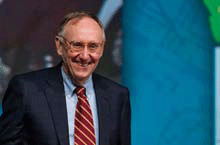Articles in the Articles Category
When professions like Engineering, Information Technology, etc thrive,
The surveying profession loses its charm.
Despite, Surveying is a critical Service also.
A Service that serves the society and people at large.
A ‘less rewarding’ profession, may be.
Not glorified. Not acknowledged.
But, it is a profession that lays the foundation of so much more.
Though foundations are invisible.
The importance of foundations …
Septemeber 2008
Institute of Navigation’s Satellite
Division ION GNS 2008
September 16-19, 2008
Savannah, Georgia, USA
http://www.ion.org
The Perspectives, The role of Surveyors in the European Economy and Society
17-19, September
Strasbourg, France
http://www.geometre-strasbourg2008.eu
CARIS 2008
September 22 – …

The study areas are situated in the Arabian Gulf. -It is a shallow sea with its long axis oriented in NW-SE direction, and its average water depth is about 36m. The Evaporation and wind are the main driving forces for water circulation in the Arabian Gulf. Evaporation is stronger in winter due to high wind speed, than summer when the water surface temperature is higher. The overall circulation in the inner Arabian Gulf is cyclonic…

The patented TIDGET® (“tracking widget”) sensor operates by taking brief snapshots of GPS data when activated [1]. These snapshots are stored in the flash memory and forwarded to the LocatorNet Server through the data link for processing [2]. The TIDGET is built using the RF front-end of a commercial GPS chip (see Figure 2). The device is designed to operate with a variety of different types of data links providing a low-power location solution…

The LBS market has been segmented into 3 main categories: • B2C: Business to Consumer • B2B2C: Business to Business to Consumer • B2B: Business to Business Details of this segmentation are provided in Figure 2. This segmentation highlights the diversity of services that can be offered by an operator. This diversity of services is also a diversity of business model. The LBS market has been especially Figure 1…

The Ministry of Science & Technology, Government of India and Bentley Systems, Incorporated has launched the 2008-2009 Future Cities India 2020 competition finals. Currently in its third year, the competition encourages students to help prepare India’s cities for the year 2020 by providing design solutions to real-world infrastructure challenges. This …
From the role of land administration in sustainable development…
To the promotion of effective land markets.
e-land administration, land registration, cadastral surveying and mapping.
Poverty reduction and protection of vulnerable groups.
A range of issues.
The 14th PCIGIAP meet at Kuala Lumpur discussed and deliberated all.
Another step in a long journey…
The journey which is difficult and tortuous.
Understandably, when one deals …












 (5.00 out of 5)
(5.00 out of 5)